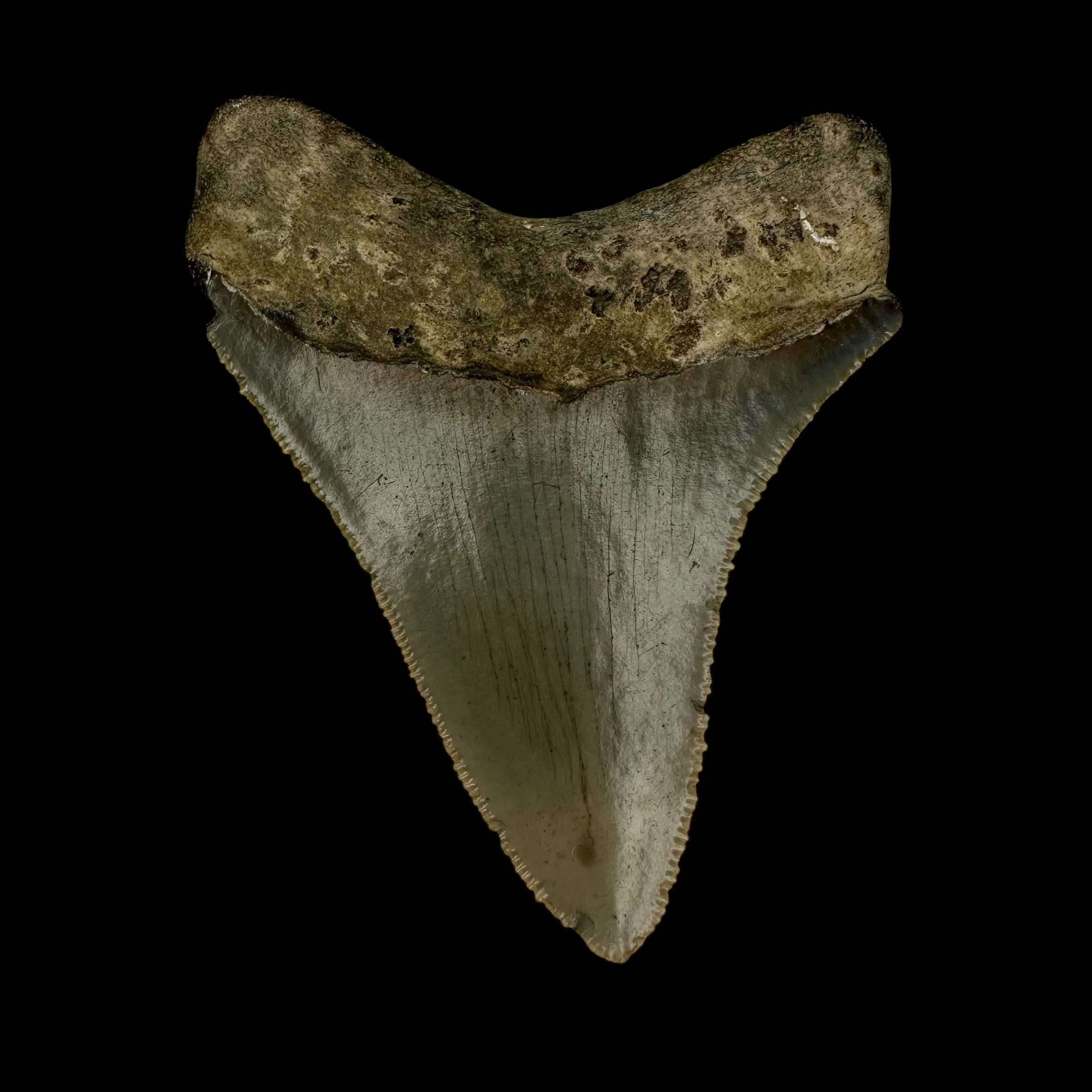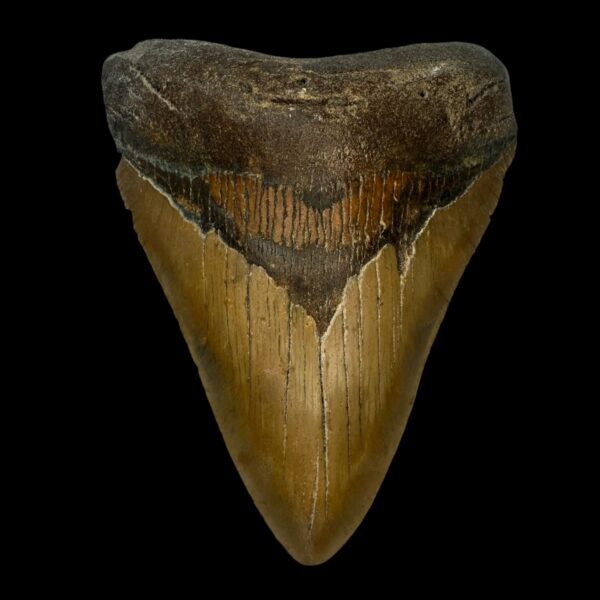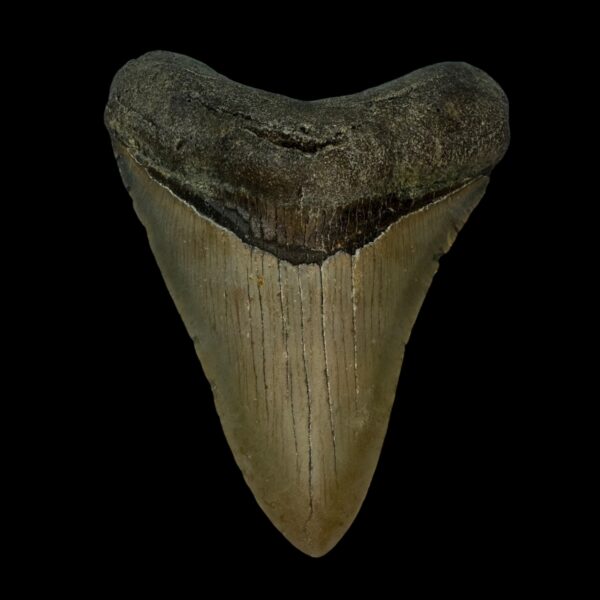Megalodon Tooth: How Many Did This Prehistoric Giant Have?
Megalodon vs. Great White Shark: A Jaw-Dropping Comparison
The Megalodon tooth is one of the most iconic fossils in history, giving us a glimpse into the power of this prehistoric predator. The Megalodon (Otodus megalodon) was one of the most terrifying creatures to ever roam the oceans. It dwarfed even the great white shark, and one of its most fascinating features was its massive set of teeth.
While a great white shark has around 50 teeth visible at a time, it can go through 20,000 teeth in its lifetime. But how many teeth did a Megalodon have?
🔹 More than double! At any given time, a Megalodon had about 276 teeth, arranged in five rows. Over its lifetime, it could shed and replace up to 40,000 teeth!
The Enormous Size of a Megalodon Tooth
One of the most striking things about Megalodon fossils is the size of their teeth. These monstrous teeth could grow up to 7 inches (17.8 cm) in length, making them the largest shark teeth ever discovered.
🦷 Why were Megalodon teeth so big?
Megalodons were apex predators that hunted large marine mammals like whales, dolphins, and giant sea turtles. Their massive, serrated teeth were designed to crush bones and tear through thick flesh. A Megalodon tooth was built for power, making it one of the most sought-after fossils today.
Where Are Megalodon Teeth Found Today?
A Megalodon tooth fossil is one of the most common prehistoric shark fossils. Since sharks constantly lose and replace teeth, thousands of Megalodon teeth fossils have been discovered worldwide, especially in:
📍 Florida, USA
📍 South Carolina, USA
📍 North Carolina, USA
📍 Morocco
📍 Peru
How Do Fossilized Megalodon Teeth Form?
When a Megalodon lost a tooth, it would sink to the ocean floor. Over millions of years, the tooth would become buried in sediment. Minerals gradually replaced the organic material, preserving the tooth as a fossilized Megalodon tooth.
Tips for Finding a Megalodon Tooth
Many fossil hunters dream of finding a Megalodon tooth. Here are some tips to increase your chances:
🔹 Search along riverbeds and coastal areas where sediment has been disturbed.
🔹 Look after storms—they can wash up fossils onto beaches.
🔹 Use a sieve or small shovel to dig through the sand and mud.
🔹 Check fossil-rich locations like Florida’s Peace River or South Carolina’s Cooper River.
Finding a Megalodon tooth is like holding a piece of prehistoric history in your hands!
How Did the Megalodon Go Extinct?
Despite being the ultimate ocean predator, the Megalodon went extinct about 3.6 million years ago. Scientists believe several factors contributed to its downfall:
🔥 Climate Change: The oceans cooled, reducing its food supply.
🐋 Competition: Smaller, more agile predators (like modern great white sharks) outcompeted them.
🌍 Shifting Ecosystems: The disappearance of certain whale species may have starved them out.
Final Thoughts
So, how many teeth did a Megalodon have? At any given time, around 276 teeth, but throughout its life, possibly 40,000 teeth! These giant prehistoric sharks ruled the oceans for millions of years, and their gigantic teeth remain one of the most fascinating fossils to discover today.
Are you fascinated by Megalodons? Keep exploring the mysteries of the prehistoric ocean—you might just find a Megalodon tooth yourself!


Megalodon vs. Great White Shark: A Jaw-Dropping Comparison
The Megalodon tooth is one of the most iconic fossils in history, giving us a glimpse into the power of this prehistoric predator. The Megalodon (Otodus megalodon) was one of the most terrifying creatures to ever roam the oceans. It dwarfed even the great white shark, and one of its most fascinating features was its massive set of teeth.
While a great white shark has around 50 teeth visible at a time, it can go through 20,000 teeth in its lifetime. But how many teeth did a Megalodon have?
🔹 More than double! At any given time, a Megalodon had about 276 teeth, arranged in five rows. Over its lifetime, it could shed and replace up to 40,000 teeth!
The Enormous Size of a Megalodon Tooth
One of the most striking things about Megalodon fossils is the size of their teeth. These monstrous teeth could grow up to 7 inches (17.8 cm) in length, making them the largest shark teeth ever discovered.
🦷 Why were Megalodon teeth so big?
Megalodons were apex predators that hunted large marine mammals like whales, dolphins, and giant sea turtles. Their massive, serrated teeth were designed to crush bones and tear through thick flesh. A Megalodon tooth was built for power, making it one of the most sought-after fossils today.
Where Are Megalodon Teeth Found Today?
A Megalodon tooth fossil is one of the most common prehistoric shark fossils. Since sharks constantly lose and replace teeth, thousands of Megalodon teeth fossils have been discovered worldwide, especially in:
📍 Florida, USA
📍 South Carolina, USA
📍 North Carolina, USA
📍 Morocco
📍 Peru
🔗 External Resource: Smithsonian Megalodon Facts
How Do Fossilized Megalodon Teeth Form?
When a Megalodon lost a tooth, it would sink to the ocean floor. Over millions of years, the tooth would become buried in sediment. Minerals gradually replaced the organic material, preserving the tooth as a fossilized Megalodon tooth.
Tips for Finding a Megalodon Tooth
Many fossil hunters dream of finding a Megalodon tooth. Here are some tips to increase your chances:
🔹 Search along riverbeds and coastal areas where sediment has been disturbed.
🔹 Look after storms—they can wash up fossils onto beaches.
🔹 Use a sieve or small shovel to dig through the sand and mud.
🔹 Check fossil-rich locations like Florida’s Peace River or South Carolina’s Cooper River.
🔗 External Resource: National Geographic on Megalodon Fossils
Finding a Megalodon tooth is like holding a piece of prehistoric history in your hands!
How Did the Megalodon Go Extinct?
Despite being the ultimate ocean predator, the Megalodon went extinct about 3.6 million years ago. Scientists believe several factors contributed to its downfall:
🔥 Climate Change: The oceans cooled, reducing its food supply.
🐋 Competition: Smaller, more agile predators (like modern great white sharks) outcompeted them.
🌍 Shifting Ecosystems: The disappearance of certain whale species may have starved them out.
🔗 External Resource: Fossil Hunting Tips
Internal Links for More Fossil Discoveries
🔹 How to Identify Fossilized Shark Teeth
🔹 The Best Places to Find Prehistoric Fossils
Final Thoughts
So, how many teeth did a Megalodon have? At any given time, around 276 teeth, but throughout its life, possibly 40,000 teeth! These giant prehistoric sharks ruled the oceans for millions of years, and their gigantic teeth remain one of the most fascinating fossils to discover today.
Are you fascinated by Megalodons? Keep exploring the mysteries of the prehistoric ocean—you might just find a Megalodon tooth yourself!




